Key Design Parameters of Standard Horn Antennas
Standard Horn Antennas represent one of the most fundamental components in microwave engineering, serving as essential elements for signal transmission and reception across diverse frequency spectrums. These specialized antennas derive their name from their distinctive horn-shaped design, which effectively channels electromagnetic waves while providing exceptional gain and directivity. When designing Standard Horn Antennas, engineers must carefully consider several critical parameters that directly impact performance characteristics, including aperture dimensions, flare angle, waveguide specifications, and material selection. Each parameter influences the antenna's efficiency, bandwidth capabilities, and overall radiation pattern, making precise engineering essential for applications ranging from satellite communications to advanced radar systems and laboratory testing environments.
Fundamental Design Elements for Standard Horn Antennas
Aperture Dimensions and Flare Angle
The aperture dimensions and flare angle constitute critical design parameters that directly impact the performance of Standard Horn Antennas. These elements determine the antenna's gain, beamwidth, and overall radiation efficiency. The aperture refers to the open end of the horn structure, and its dimensions—typically measured in terms of wavelengths—determine how effectively the antenna can capture or radiate electromagnetic energy. For optimal performance, the aperture size must be carefully calculated relative to the operating frequency; larger apertures generally provide higher gain but may introduce phase errors if not properly designed. Advanced Microwave Technologies Co., Ltd. engineers its Standard Horn Antenna products with precision-controlled aperture dimensions to ensure high efficiency across operating frequencies from 1 GHz to 110 GHz.
The flare angle—the rate at which the horn expands from the waveguide to the aperture—represents another crucial parameter. A properly calculated flare angle balances gain requirements with impedance matching considerations. If the angle is too steep, it may introduce unwanted reflections and standing waves; if too gradual, the antenna becomes unnecessarily long while potentially sacrificing gain. Our Standard Horn Antenna designs implement optimized flare geometries developed through decades of engineering experience, ensuring minimal transmission loss and stable signal performance. This careful balance between aperture size and flare progression allows our antennas to achieve gain values ranging from 10 dB to 25 dB while maintaining excellent VSWR values of ≤1.5:1 across their operational bandwidth.
Waveguide Properties and Transition Design
The waveguide section forms the foundation of any Standard Horn Antenna, serving as the transmission line that connects to external systems and initiates the electromagnetic propagation. Critical parameters in waveguide design include its cross-sectional dimensions, wall thickness, and material properties—all of which must be precisely calibrated to support the desired frequency range while minimizing insertion loss. Standard rectangular waveguides follow established dimensional standards that determine their cutoff frequencies and propagation modes. Advanced Microwave's Standard Horn Antenna designs incorporate carefully selected waveguide sections that ensure proper mode conversion and impedance transformation.
The transition region between the waveguide and the horn flare represents a particularly sensitive design element. This section must facilitate smooth electromagnetic field expansion without introducing discontinuities that generate reflections or higher-order modes. Engineering this transition requires sophisticated simulation techniques and precise manufacturing tolerances. Our Standard Horn Antenna products feature meticulously designed transitions that maintain phase coherence across the aperture plane. This attention to waveguide properties enables our antennas to deliver consistent performance across extensive frequency bands, making them ideal for applications in both research environments and commercial systems. The waveguide sections are manufactured from high-quality aluminum alloy or brass with corrosion-resistant coatings, ensuring durability while maintaining excellent electrical conductivity for signal integrity.
Polarization Control and Feed Mechanisms
Polarization characteristics represent essential design parameters that determine a Standard Horn Antenna's compatibility with specific applications. Linear polarization—the most common configuration—provides simplified integration with many systems but may be susceptible to polarization mismatch losses in certain environments. Circular polarization offers advantages for satellite communications and weather radar applications by reducing orientation sensitivity. Advanced Microwave Technologies designs Standard Horn Antennas with carefully engineered feed structures that support both polarization options, providing flexibility for diverse applications.
The feed mechanism—the method by which signals are coupled to or from the waveguide—significantly influences the antenna's overall performance. Design considerations include impedance matching at the feed point, reflection coefficient minimization, and proper mode excitation. For optimal results, the feed structure must be precisely aligned with the waveguide axis and properly dimensioned relative to the operating wavelength. Our Standard Horn Antenna designs incorporate precision-engineered connector interfaces, typically using SMA, N-Type, or custom configurations based on frequency requirements. These connectors are integrated with exacting tolerances to ensure minimal VSWR and insertion loss at the critical feed point. This attention to polarization and feed design enables our antennas to maintain exceptional efficiency across their operational bandwidth, supporting applications from telecommunications infrastructure to aerospace systems and defense installations.

Performance Optimization Parameters
Gain and Directivity Enhancement Techniques
Gain and directivity represent fundamental performance metrics for Standard Horn Antennas, directly influencing their effectiveness in long-distance communication, radar applications, and measurement systems. These parameters are intrinsically linked to the antenna's ability to focus electromagnetic energy in a specific direction while minimizing radiation in unwanted directions. The gain calculation integrates both the antenna's directivity and its efficiency, providing a comprehensive measure of performance. Advanced Microwave Technologies employs several sophisticated design techniques to optimize these critical parameters in our Standard Horn Antenna products, achieving gain values that typically range from 10 dB to 25 dB depending on the specific model and frequency requirements.
One key optimization technique involves carefully controlling the aperture phase distribution through precise horn profile design. By implementing corrugated structures or optimized flare contours, our engineers minimize phase errors across the aperture, resulting in enhanced directivity without increasing physical dimensions. Additionally, we employ specialized surface treatments on the internal horn surfaces to reduce insertion loss and improve efficiency. These treatments maintain high conductivity while minimizing surface roughness effects that become increasingly significant at millimeter-wave frequencies. Our Standard Horn Antenna designs undergo rigorous computer simulation during development, employing finite element analysis and method of moments calculations to predict and optimize performance before physical prototyping begins. This comprehensive approach to gain optimization ensures that our antennas deliver exceptional performance even in demanding applications such as satellite communications and defense systems.
Bandwidth and Frequency Response Optimization
Bandwidth capabilities represent critical design parameters for Standard Horn Antennas, particularly in applications requiring operation across multiple frequency bands or with broadband signals. The usable bandwidth is influenced by numerous design elements, including the waveguide dimensions, flare geometry, and aperture size relative to wavelength. Advanced Microwave Technologies specializes in optimizing these parameters to achieve exceptional bandwidth performance in our Standard Horn Antenna products, supporting frequency ranges from 1 GHz to 110 GHz with consistent radiation characteristics throughout their operational range.
Several specialized techniques enable this broad frequency response. Our engineers implement carefully calculated tapered transitions between waveguide sections and horn flares, minimizing reflections that could otherwise limit bandwidth. Additionally, we employ precision manufacturing processes that maintain tight dimensional tolerances across all components, ensuring that theoretical performance translates to real-world capabilities. For applications requiring ultra-wideband performance, we offer specially designed Standard Horn Antenna variants incorporating ridge waveguide technology or dual-mode excitation mechanisms. These design enhancements allow a single antenna to operate effectively across multiple octaves of frequency range while maintaining stable gain and pattern characteristics. The resulting broadband compatibility makes our Standard Horn Antennas ideal for advanced applications in 5G communications infrastructure, satellite ground stations, and sophisticated radar systems where frequency agility represents a critical requirement.
Radiation Pattern and Sidelobe Control
The radiation pattern characteristics of Standard Horn Antennas significantly impact their suitability for specific applications, particularly in environments where precise spatial discrimination of signals is required. Key pattern parameters include the main lobe beamwidth, sidelobe levels, front-to-back ratio, and cross-polarization performance. Advanced Microwave Technologies implements several sophisticated design techniques to optimize these radiation pattern elements in our Standard Horn Antenna products, ensuring they deliver precision performance in challenging operational environments.
Controlling sidelobe levels—unwanted radiation in directions other than the main beam—represents a particular focus of our design approach. Our engineers employ carefully calculated aperture illumination functions through precise horn profile design, minimizing sidelobes without compromising main beam efficiency. For applications requiring exceptional pattern purity, we offer enhanced Standard Horn Antenna variants with corrugated interior surfaces or specially shaped aperture transitions. These features suppress unwanted radiation modes and improve polarization purity, resulting in cleaner radiation patterns with superior interference rejection capabilities. Our manufacturing processes maintain precise symmetry and dimensional stability throughout each antenna, ensuring that theoretical pattern characteristics translate to actual performance. These optimization techniques make our Standard Horn Antennas particularly valuable in aerospace and defense applications, where their precision engineering supports mission-critical operations in electronic warfare, navigation systems, and radar applications requiring exceptional radiation pattern control and minimized interference potential.

Manufacturing and Material Considerations
Material Selection and Surface Treatment
Material selection represents a fundamental design parameter that significantly influences the performance, durability, and cost-effectiveness of Standard Horn Antennas. The primary materials used in these antennas must exhibit excellent electrical conductivity to minimize insertion loss while providing sufficient mechanical strength and environmental resilience. Advanced Microwave Technologies carefully selects materials for our Standard Horn Antenna products based on comprehensive performance criteria, typically utilizing high-grade aluminum alloys or brass depending on specific application requirements and frequency ranges. These material choices balance excellent electrical properties with practical manufacturing considerations and long-term reliability.
Surface treatment technologies play an equally critical role in optimizing antenna performance. The interior surfaces of a Standard Horn Antenna directly interact with electromagnetic fields, making their electrical and mechanical properties essential to overall system efficiency. Our manufacturing processes incorporate precision machining techniques that achieve exceptional surface smoothness, minimizing scattering losses that become increasingly significant at higher frequencies. Additionally, we apply specialized corrosion-resistant coatings that protect the antenna while maintaining optimal conductivity. For applications requiring enhanced performance, we offer gold or silver plating options that further reduce insertion loss, particularly valuable in millimeter-wave frequency ranges. These surface treatments ensure our Standard Horn Antennas maintain their performance characteristics even in challenging environmental conditions, supporting applications from laboratory environments to outdoor telecommunications infrastructure. The meticulous attention to material selection and surface quality enables our antennas to deliver consistent, high-efficiency operation throughout their extended service life.
Precision Manufacturing Techniques
Manufacturing precision represents a critical parameter that directly influences Standard Horn Antenna performance, particularly at higher frequency ranges where wavelengths become extremely small and dimensional tolerances correspondingly critical. Advanced Microwave Technologies employs state-of-the-art production techniques to ensure exceptional accuracy in all dimensions, surface finishes, and assembly alignments of our Standard Horn Antenna products. These precision manufacturing capabilities enable us to produce antennas that consistently meet or exceed specified performance parameters while maintaining reliable batch-to-batch consistency.
Our manufacturing processes incorporate computer-controlled machining centers with micron-level precision, enabling exact replication of complex horn profiles and waveguide transitions. For millimeter-wave frequency Standard Horn Antennas, where tolerances become particularly demanding, we implement specialized micro-machining techniques and enhanced quality control procedures. These advanced manufacturing approaches ensure dimensional stability throughout the production process, preventing subtle deformations that could otherwise compromise electrical performance. Each antenna undergoes comprehensive mechanical inspection using precision measurement equipment before advancing to electrical testing and verification. This rigorous manufacturing discipline enables our Standard Horn Antennas to achieve exceptional electrical performance even at the highest operational frequencies, supporting applications in cutting-edge fields such as automotive radar systems, millimeter-wave imaging, and advanced satellite communications. The combination of sophisticated design engineering and precision manufacturing capability allows Advanced Microwave Technologies to deliver Standard Horn Antenna products that consistently meet the exacting requirements of both research and commercial applications.
Environmental Durability and Reliability Testing
Environmental resilience represents an essential design parameter for Standard Horn Antennas, particularly those deployed in challenging operational environments or mission-critical applications. These antennas must maintain consistent electrical performance while withstanding various environmental stressors, including temperature extremes, humidity, vibration, and potentially corrosive atmospheres. Advanced Microwave Technologies implements comprehensive design considerations and testing protocols to ensure our Standard Horn Antenna products deliver reliable performance throughout their operational lifetime, regardless of deployment conditions.
Our design approach incorporates several durability-enhancing features, including robust mounting structures, weatherproof sealing methods, and specialized protective coatings tailored to specific environmental threats. For Standard Horn Antennas intended for outdoor deployment, we implement additional protective measures such as hydrophobic surface treatments and reinforced connector interfaces. Every antenna design undergoes rigorous environmental testing to verify its resilience under challenging conditions. Our testing protocols typically include thermal cycling between extreme temperatures, humidity exposure, salt fog testing for corrosion resistance, and mechanical shock and vibration testing to simulate transportation and operational stresses. These comprehensive testing procedures ensure our Standard Horn Antennas maintain their critical performance parameters even under adverse conditions. This environmental durability makes our antennas particularly valuable in aerospace applications, defense systems, and outdoor telecommunications infrastructure, where reliability under challenging conditions is paramount. The combination of robust design, quality materials, and thorough validation testing ensures that Advanced Microwave's Standard Horn Antenna products deliver dependable performance throughout their extensive service life.
Conclusion
The key design parameters of Standard Horn Antennas represent a sophisticated balance of electromagnetic principles, material science, and precision engineering. By optimizing aperture dimensions, waveguide properties, surface treatments, and manufacturing precision, Advanced Microwave Technologies delivers antennas that combine exceptional performance with outstanding reliability. Our team's expertise ensures each parameter is carefully calibrated to meet your specific application requirements.
Looking for custom Standard Horn Antenna solutions for your unique applications? Advanced Microwave Technologies offers comprehensive OEM services backed by our perfect supply chain system, professional R&D team, and over 20 years of industry experience. From prototyping to full-scale production, our ISO:9001:2008 certified and RoHS compliant products deliver superior performance for satellite communications, defense, aerospace, and navigation applications. Experience the difference of working with a global leader in microwave technology—contact us today at sales@admicrowave.com to discuss how we can support your next project with our expertise and quick turnaround capabilities.
References
1. Balanis, C. A. (2016). "Antenna Theory: Analysis and Design." Wiley, 4th Edition.
2. Milligan, T. A. (2018). "Modern Antenna Design." Wiley-IEEE Press, 3rd Edition.
3. Rudge, A. W., & Milne, K. (2022). "The Handbook of Antenna Design: Volume 1." The Institution of Engineering and Technology.
4. Lee, K. F., & Chen, W. (2019). "Advances in Microstrip and Printed Antennas." Wiley Series in Microwave and Optical Engineering.
5. Pozar, D. M. (2017). "Microwave Engineering." Wiley, 5th Edition.
6. Volakis, J. L. (2020). "Antenna Engineering Handbook." McGraw-Hill Education, 6th Edition.
YOU MAY LIKE
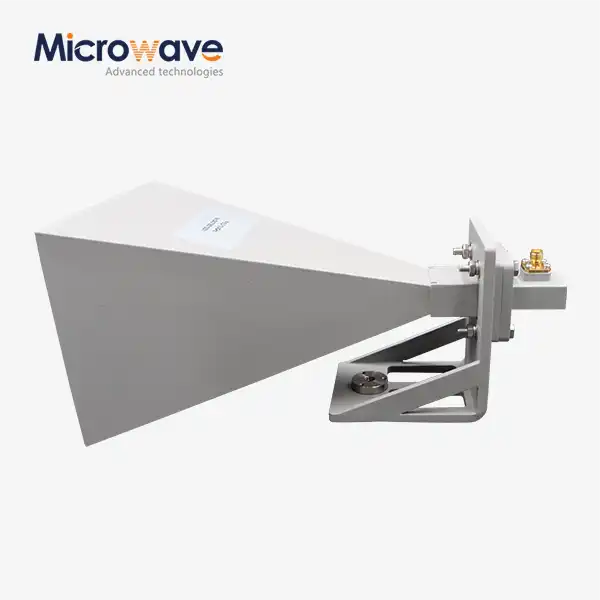 VIEW MOREStandard Horn Antenna
VIEW MOREStandard Horn Antenna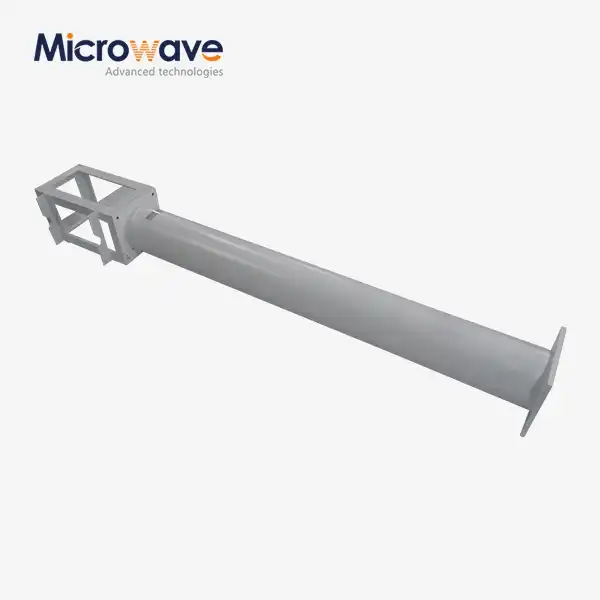 VIEW MOREMMDS Transmitting Antenna
VIEW MOREMMDS Transmitting Antenna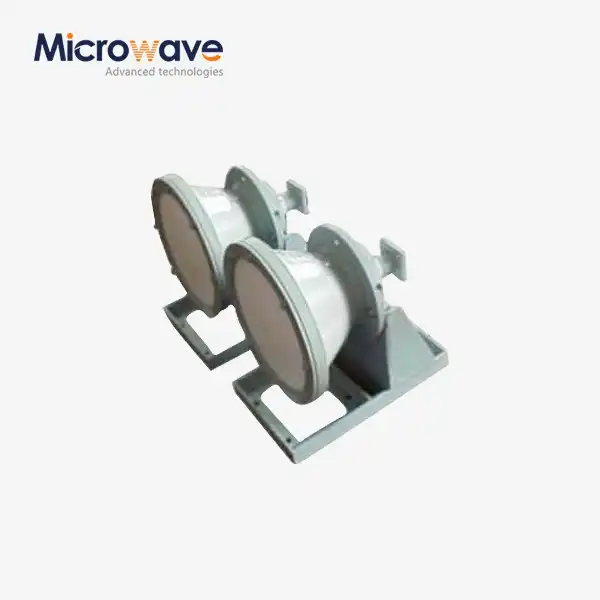 VIEW MOREConical Horn Lens Antenna
VIEW MOREConical Horn Lens Antenna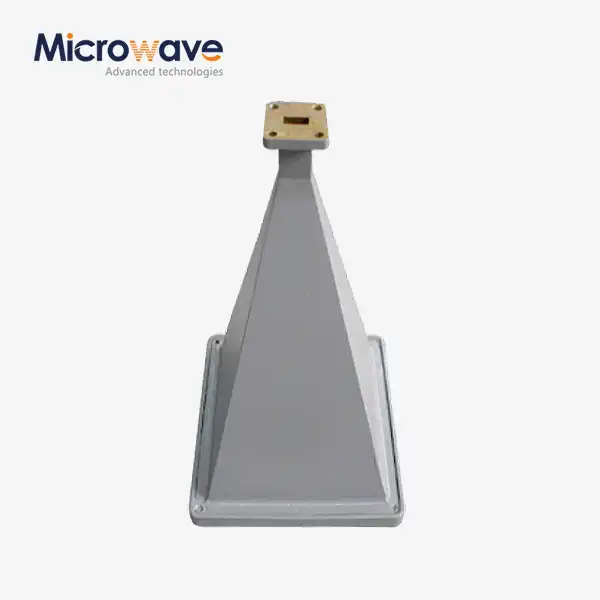 VIEW MOREPyramid Horn Lens Antenna
VIEW MOREPyramid Horn Lens Antenna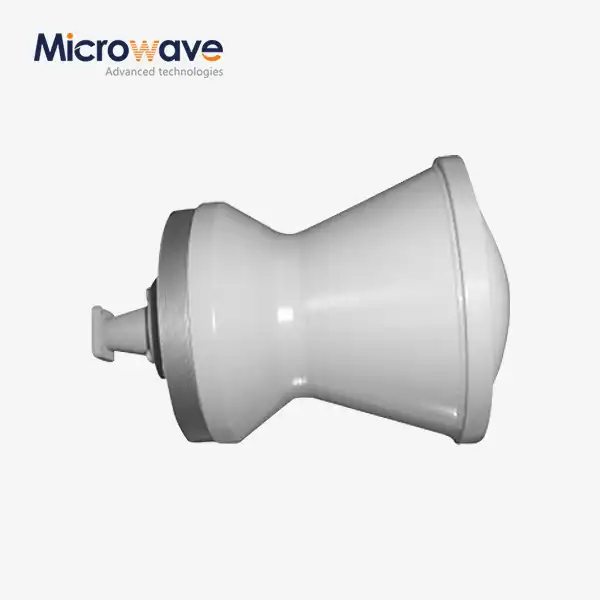 VIEW MOREPoint Focusing Horn Lens Antenna
VIEW MOREPoint Focusing Horn Lens Antenna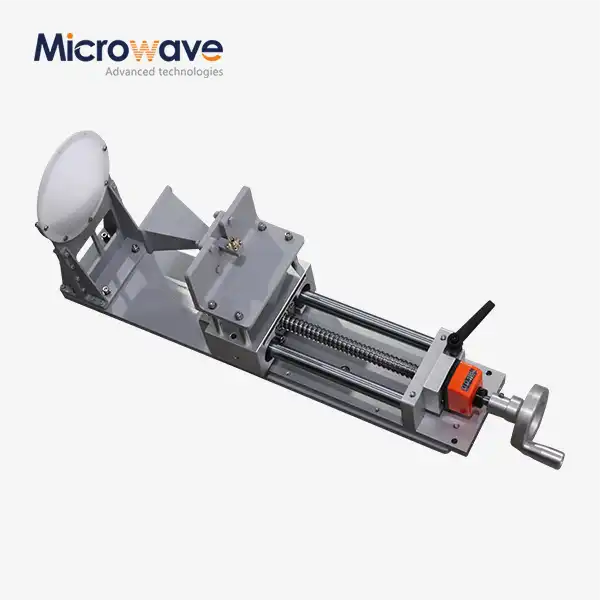 VIEW MOREFeed Fired Lens Antenna
VIEW MOREFeed Fired Lens Antenna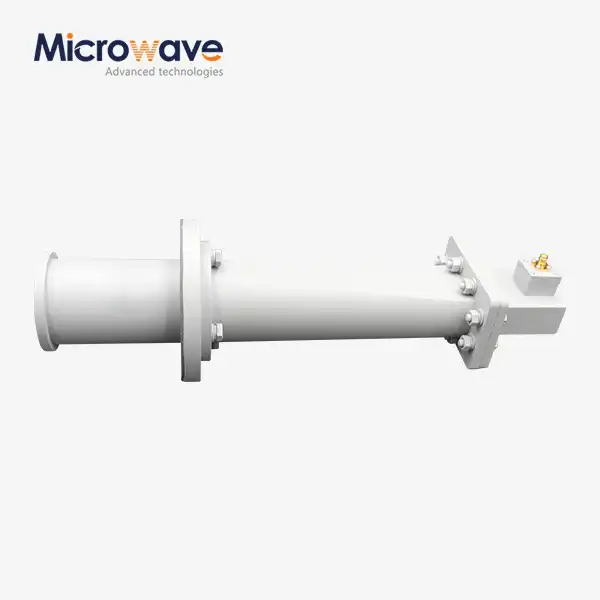 VIEW MORECorrugated Horn and Multimode Horn Antenna
VIEW MORECorrugated Horn and Multimode Horn Antenna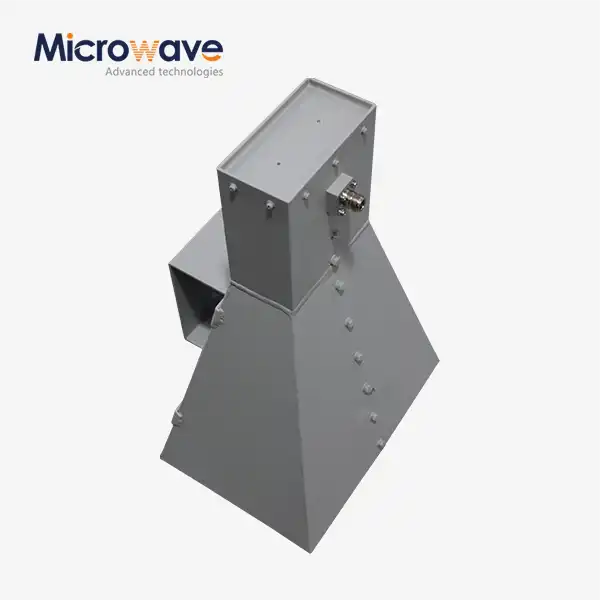 VIEW MOREWideband Double-ridged Horn Antenna
VIEW MOREWideband Double-ridged Horn Antenna




